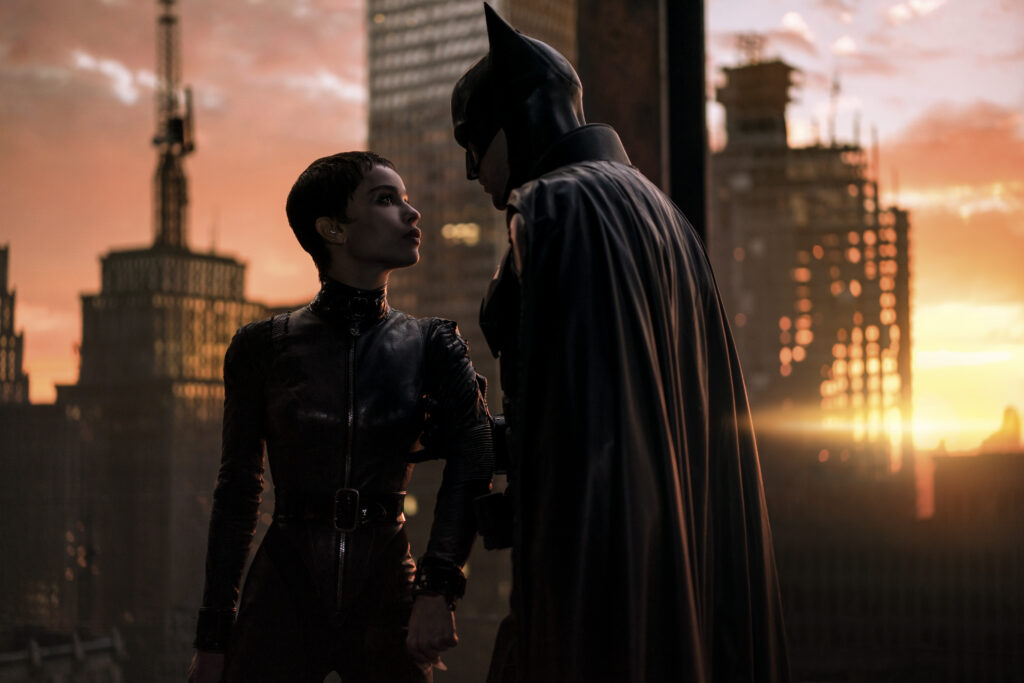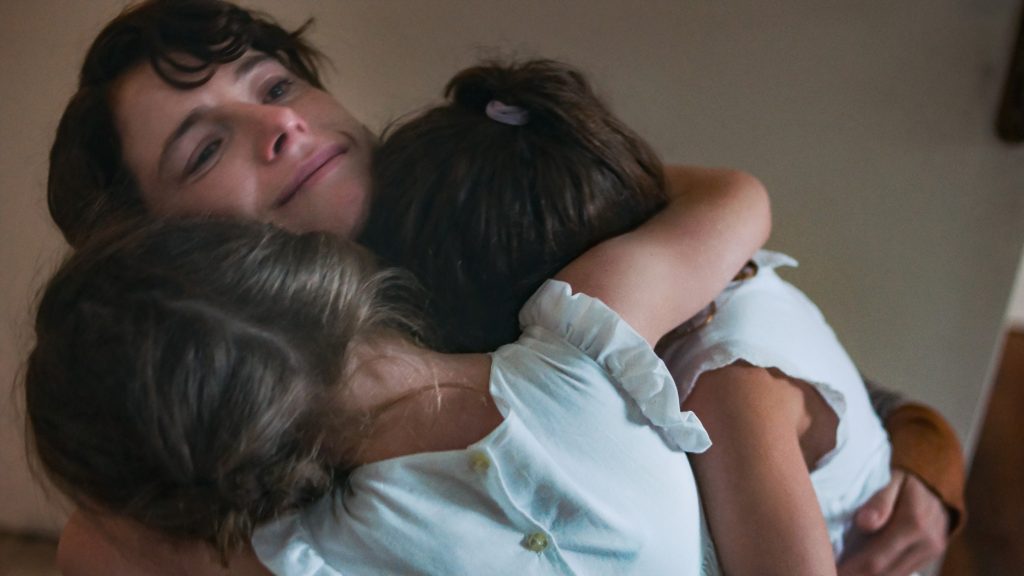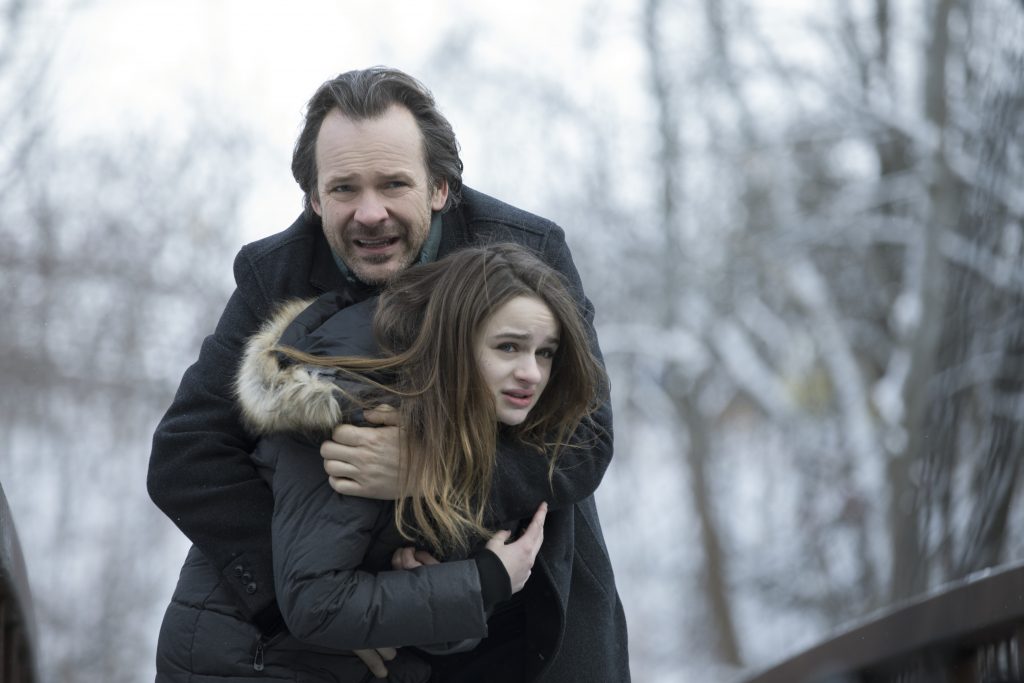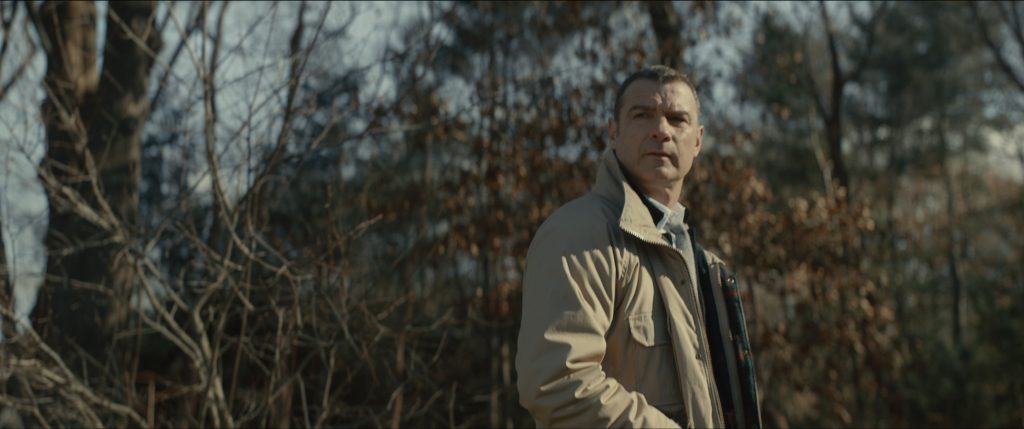March 3, 2022
by Carla Hay

Directed by Antoine Fuqua
Culture Representation: Taking place primarily in Los Angeles, the dramatic film “The Guilty” features a predominantly white cast of characters (with a few African Americans, Asians and Latinos) representing the middle-class.
Culture Clash: A police officer, who has been demoted to 911 operator duties, gets a harrowing phone call from a woman who says she’s in a vehicle and she’s been kidnapped, and the police officer breaks protocol to try to help her.
Culture Audience: “The Guilty” will appeal primarily to people interested in thrillers that have many twists and turns, with some plot developments more believable than others.
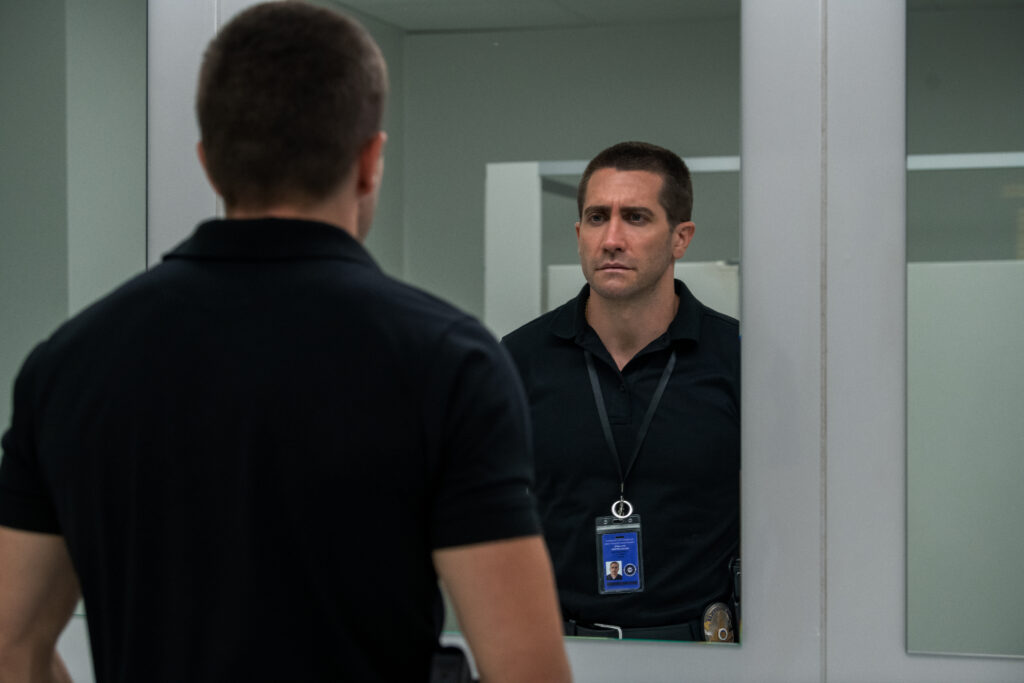
Directed by Antoine Fuqua and written by Nic Pizzolatto, “The Guilty” is a remake of the 2018 Danish film “The Guilty” (“Den Skyldige”), which was co-written and directed by Gustav Möller as Möller’s feature-film debut. By most accounts and critics’ reviews, the original Danish movie is better than the American version. However, the American version of “The Guilty” is still a satisfying thriller for anyone who can tolerate a movie where most of it is centered on a not-very-likable protagonist working as an emergency phone operator in a call center.
The American version of “The Guilty” adheres very close to the original story in the Danish version on “The Guilty.” There are some questionable things in the American version that might be more acceptable or overlooked in Denmark because of different laws and policies when it comes to emergency call operators and what cops can and cannot do while on duty. The American movie was filmed during the COVID-19 pandemic before a COVID-19 vaccine existed. Because almost the entire setting of the movie is a call center and consists of phone conversations, it turns out those were ideal conditions to film during a pre-vaccine COVID-19 pandemic.
In the American version of “The Guilty,” Joe Baylor (played by Jake Gyllenhaal) is a Los Angeles police officer who’s under a great deal of stress. Joe has been assigned 911 call operator duties because he’s been temporarily demoted. And he’s not happy about it. The reason for Joe’s demotion is revealed toward the end of the film. Joe has asthma and uses an inhaler. Not surprisingly, his asthmatic condition is aggravated by all the stress he goes through during the course of the story.
Even without this demotion, it’s obvious from the beginning of the film that Joe is someone with a short temper. When he gets a call from a bicycle rider who injured himself in an accident and has called 911 to request an ambulance, Joe scolds the injured person and tells him not to ride a bike when he’s drunk. And then Joe hangs up. Joe has no proof that the caller is intoxicated. His lack of empathy and the way he jumps to conclusions with anger are indications that he’s a “loose cannon.”
Adding to the stress level at the call center, a wildfire is raging in Los Angeles County, so there’s a shortage of emergency workers who can respond to calls that aren’t related to the fire. The 911 call center has TV monitors tuned into the local news to keep track of the wildfire situation. This wildfire is a plot development that was added to the American version of “The Guilty.”
Joe gets some other calls in the beginning of the movie that show how he’s ill-tempered and impatient with callers. When Joe talks to a male caller who’s having a panic attack, and the caller admits that he’s high on meth, Joe says he’ll send an ambulance as well as police to arrest him. The caller quickly hangs up.
Joe takes another call about a computer stolen from a rental car. He quickly determines that the caller whose computer was stolen was involved in a sex worker transaction that went wrong. Joe concludes that the sex worker probably stole the computer, so Joe is unsympathetic to the theft victim. Throughout the movie, viewers see that Joe cannot be an impartial phone operator and he acts like an investigative cop who reaches his own conclusions when he might not know all the facts.
The first big clue that Joe is involved in a high-profile matter is the movie’s opening scene, when he gets a call on his cell phone from a female Los Angeles Times reporter, who wants to interview him. Joe abruptly tells her that he has no comment, and he hangs up. People who work at call centers generally aren’t allowed to use their cell phones while they’re on duty in the call center, so it’s also the first sign that Joe thinks that the call center’s policies don’t really apply to him.
Joe’s sense of entitlement becomes even more apparent later in the story when Joe goes beyond what a 911 call operator is allowed to do, and he acts like a cop who wants to solve a case and be a hero rescuer. For example, emergency call centers, such as the one depicted in “The Guilty,” usually have a policy of using only the authorized, monitored phones to help a caller. But there’s a scene in the movie when Joe breaks this policy by sneaking off to an empty office room to make secret phone calls that can’t be recorded.
Joe is also standoffish or rude to any of the other 911 operators he interacts with, including a friendly co-worker named Manny (played by Adrian Martinez) and a supervisor named Riva (played by Becky Wu), who seems to just let Joe do what he wants because he’s a cop. The only time that Joe is shown being somewhat nice to his colleagues is when he wants a favor from someone. But even then, it’s only after he finds out that getting angry at them won’t help him get what he wants.
Even though he has a mostly dismissive attitude toward his work colleagues, there is one colleague whom Joe seems to care about: his cop partner Rick (voiced by Eli Goree), whom Joe later describes as his best friend. While Joe is at the call center, he calls his police supervisor Sgt. Bill Miller (voiced by Ethan Hawke) to ask how Rick is doing. What’s wrong with Rick that has gotten Joe so concerned about Rick’s well-being? That answer is also revealed toward the end of the movie.
It’s eventually shown that things aren’t going so well for Joe in his personal life. He’s been separated from his wife Jess (voiced by Gillian Zinser) for the past six months, and he doesn’t get to see their young daughter as often as he would like. Joe seems to want to get back together with Jess, but she’s very reluctant and seems to be fed up with him. During a phone call, Jess tells Joe that she won’t be there for his upcoming court appearance that’s happening the next morning.
Joe’s personal problems temporarily take a back seat when he becomes consumed with the kidnapping call. The female caller identifies herself as Emily Lighton (voiced by Riley Keough), and she says she’s been abducted by her ex-husband, who’s driving the two of them in a white van. Through some quick detective work of looking up the cell phone number that Emily is using, Joe finds out that the ex-husband is named Henry Fisher (voiced by Peter Sarsgaard), and Henry has a criminal record.
There’s an additional urgency to this phone call because Emily and Henry have two underage children who are home alone: a 6-year-old daughter named Abby (voiced by Christiana Montoya) and an infant son named Oliver. The biggest problem in locating Emily is that she doesn’t know the license plate number of the van, and she doesn’t know exactly where she is on the road because she says she can’t look out of any of the van’s windows. The rest of the movie is about Joe’s race-against-time in his efforts to save Emily. There are some twists and turns (some more shocking than others) that happen along the way.
“The Guilty” requires some suspension of disbelief when showing Joe as the only person who seems to care the most about finding this alleged kidnapping victim. However, the movie’s plot addition of the wildfire happening at the same time does make it plausible that emergency responders have to give priority to the fire at that time. There are some parts of the movie where Joe steps way over the line of police ethics when he plays judge and jury in his reactions. But when more details about Joe’s personal problems are revealed, it’s actually consistent with his personality and past actions that he acts this way.
Gyllenhaal is the only actor seen on screen for most of the film, so his compelling performance is effective in depicting this anxiety-ridden situation. The voice actors in the cast also perform capably in their roles. The last 15 minutes of the movie cram in a lot of melodrama that might have some viewers rolling their eyes in disbelief. However, stranger things and more melodramatic things have happened in real life, so the movie isn’t completely far-fetched.
After it’s revealed why Joe is going to court, a few questions remain unanswered at the end of the movie, such as: “How or why was Joe allowed to work in law enforcement in this capacity, considering what he’s being accused of in court? And what kind of attorney (it’s presumed that Joe has an attorney) would allow a client to work in this high-stress environment the day before an important court appearance?”
There are some believable explanations, of course. Maybe the police department didn’t want to suspend Joe, for whatever reason, and demoted him instead. And maybe Joe is the type of stubborn person who wouldn’t take an attorney’s advice and thinks he could handle working in a stressful job the day before his court appearance.
As for how realistically “The Guilty” depicts 911 call centers and 911 phone operators, the podcast Real Crime Profile interviewed two real-life former 911 phone operators to get their perspectives of the American version of “The Guilty.” (Spoiler alert: This podcast episode discusses everything that happens in the movie.) These former 911 operators say that “The Guilty” is mostly accurate.
Fuqua (whose directorial credits include “Training Day” and “The Equalizer” movies) and Pizzolatto (the Emmy-nominated creator of HBO’s “True Detective” series) are very familiar with telling stories about law enforcement officers who operate outside the law to solve a case or to get what the cops want. “The Guilty” tells an intriguing story, but some viewers might be bored that most of the movie takes place in one location, and the on-camera action mostly centers on a series of phone calls. People who can appreciate “The Guilty” the most are those who use their imagination, because a lot of the terror is what’s not seen on screen.
Netflix released “The Guilty” in select U.S. cinemas on September 24, 2021. The movie premiered on Netflix on October 1, 2021.

